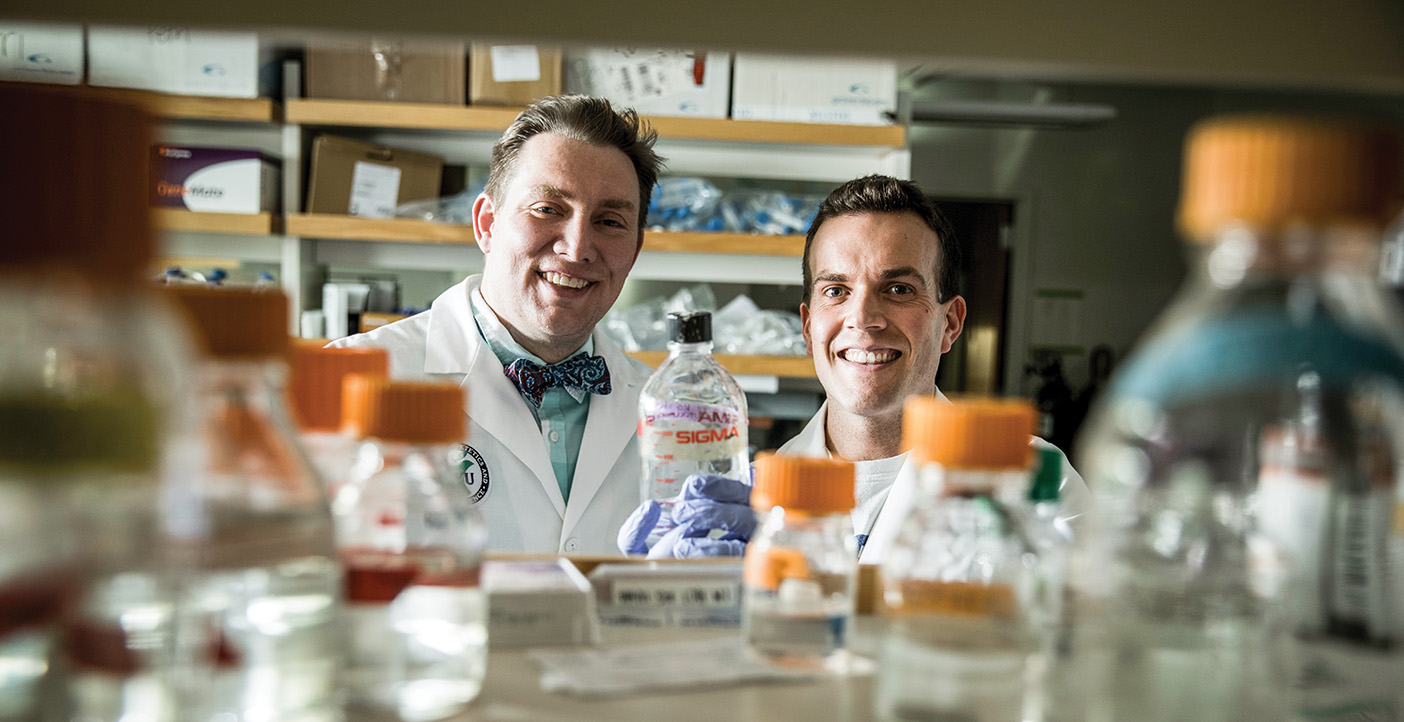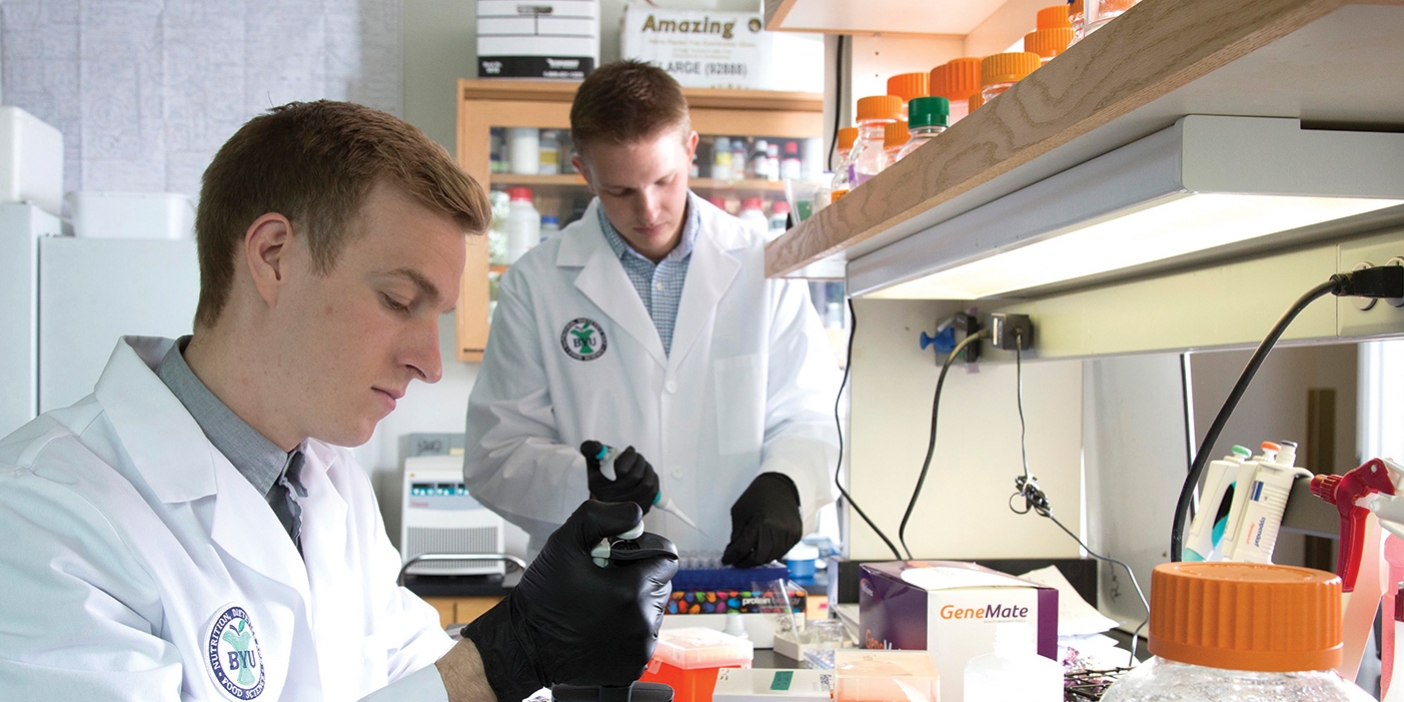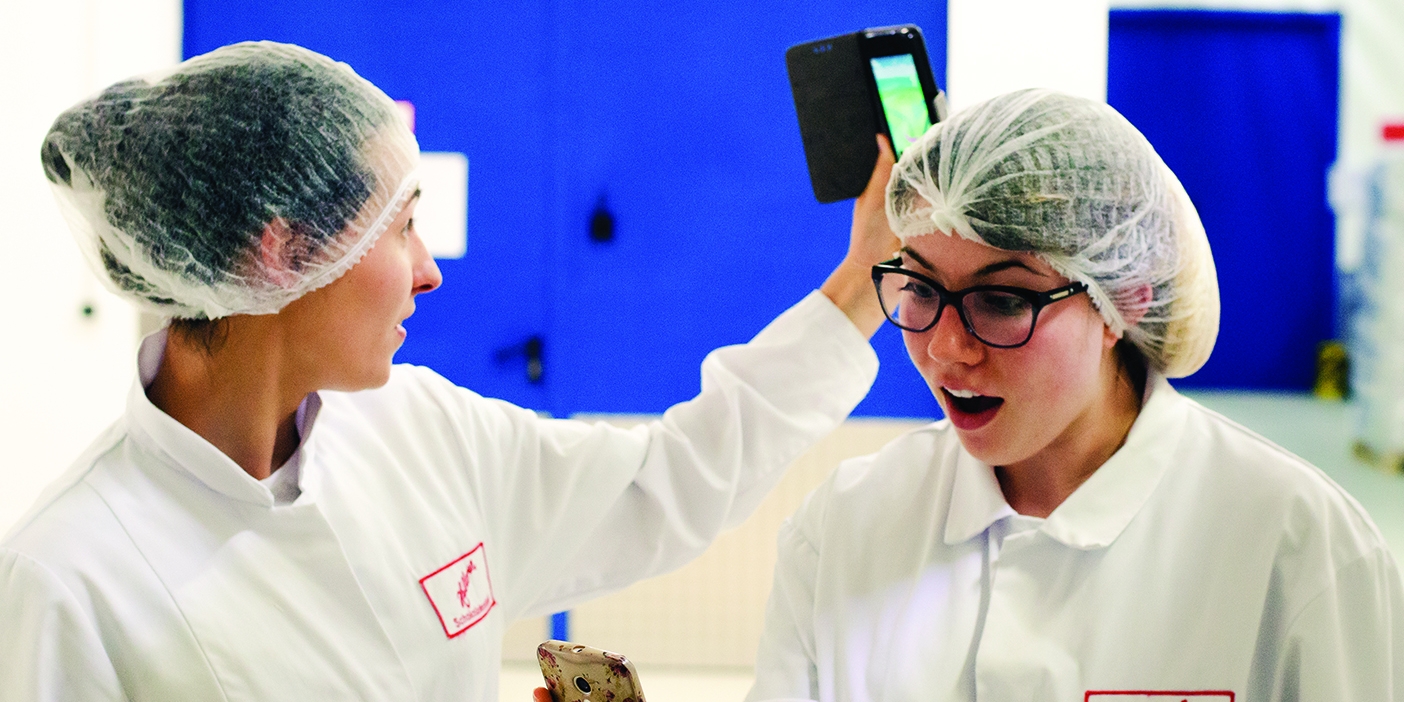
What if eating chocolate helped prevent and treat diabetes? It’s crazy enough to laugh off.
But here’s the thing: according to a new study by BYU researchers, certain compounds found in cocoa can actually help your body release more insulin and respond better to increased blood glucose. Insulin is the hormone that manages glucose, the blood sugar that reaches unhealthy levels in diabetes.
Of course there’s a catch.
“You probably have to eat a lot of cocoa, and you probably don’t want it to have a lot of sugar in it,” says study coauthor Jeffery S. Tessem (BS ’01), assistant professor of nutrition, dietetics, and food science at BYU. “It’s the compound in cocoa you’re after.”
When a person has diabetes, the body either doesn’t produce enough insulin or doesn’t process blood sugar properly. The problem originates with the failure of beta cells, whose job it is to produce insulin. The study, published in the Journal of Nutritional Biochemistry, finds that beta cells work better and remain stronger when there is an increased presence of epicatechin monomers, compounds that are found naturally in cocoa. Their research on these compounds was funded, in part, through grants from both the Diabetes Action Research and Education Foundation and the American Diabetes Association.
Collaborators at Virginia Tech were the first to note the compound’s effectiveness. They fed the cocoa compound to animals on a high-fat diet and found a decreased level of obesity and increased ability to handle high blood-glucose levels.
Tessem then worked with BYU physiology and developmental biology professors Benjamin T. Bikman (BS ’03, MS ’05) and Jason M. Hansen (BS ’94, MS ’97) and a team of graduate and undergraduate students to dissect what was happening on the cellular level—specifically, the beta-cell level. That’s when they learned that the cocoa compounds enhanced beta cells’ ability to secrete insulin.
“The epicatechin monomers are making the mitochondria in the beta cells stronger, which produces more ATP [the cell’s energy source], which then results in more insulin being released,” Tessem says.
While there has been a lot of research on similar compounds over the past decade, no one has been able to pinpoint which ones are the most beneficial or how exactly they bring about any benefit—until now. This research shows that the epicatechin monomers, the smallest of the compounds, are the most effective.
Rather than stocking up on sugar-rich chocolate bars at the checkout line, researchers believe the starting point is to look for ways to take the compound out of cocoa, make more of it, and then use it as a potential treatment for current diabetes patients.
Andrew P. Neilson (BS ’05), study coauthor and assistant professor of food science at Virginia Tech, explains: “These results will help us get closer to using these compounds more effectively in foods or supplements to maintain normal blood-glucose control and potentially even delay or prevent the onset of type 2 diabetes.”












